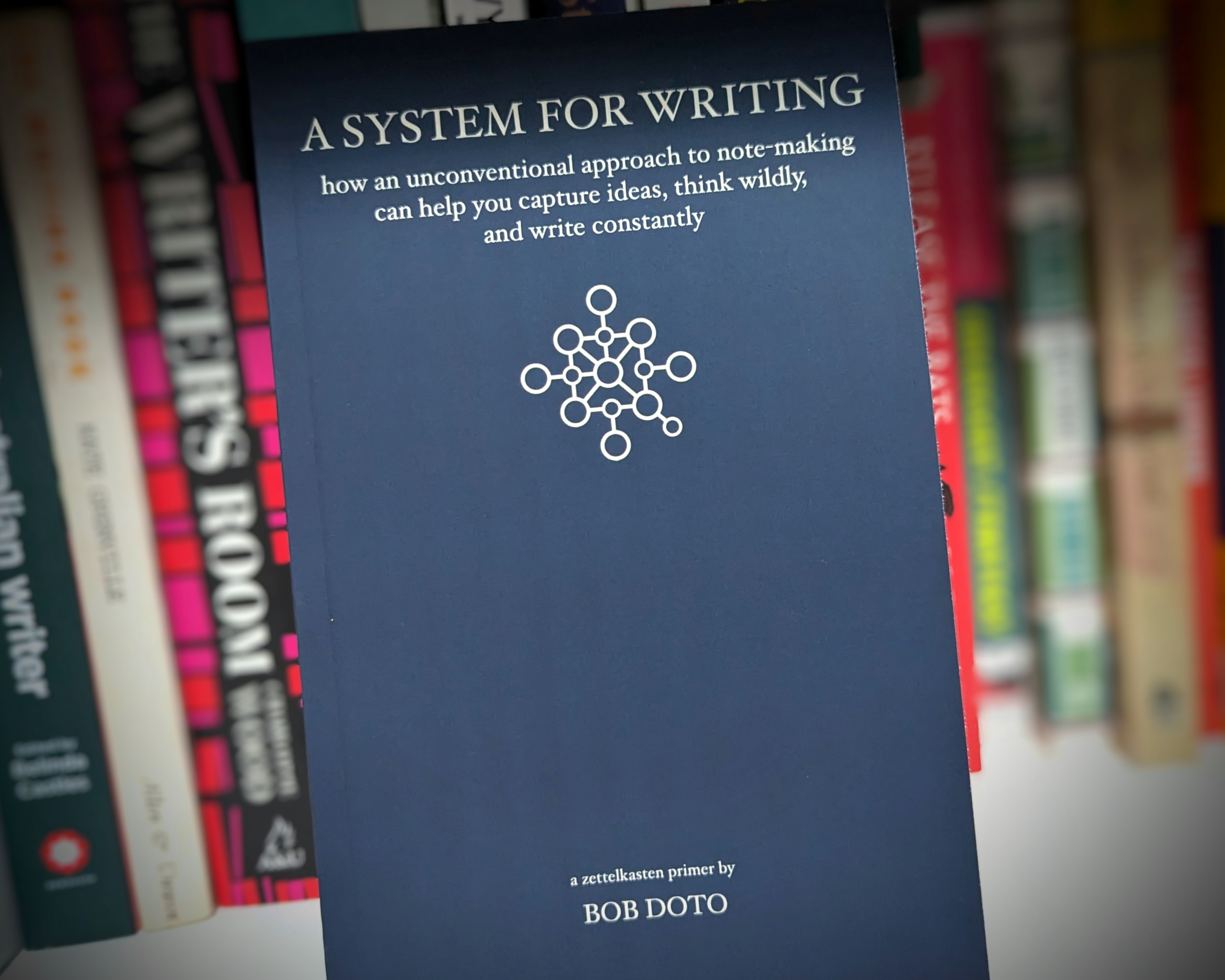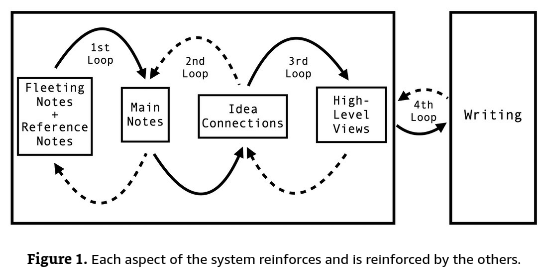A System for Writing by Bob Doto
“The note you just took has yet to realize its potential.” - Bob Doto
Another ‘Zettelkasten primer’ won’t be needed for some time, since this one is direct, concise, thorough and strongly practical.
📚A System for Writing by Bob Doto is out!

If you’ve become confused or cynical watching those endless videos in which an influencer who discovered the Zettelkasten five minutes ago is suddenly the expert; or if you’ve read Sönke Ahrens' book, How to Take Smart Notes and thought “now I know why I should make notes but I still don’t really know how”, well here’s the antidote: the only Zettelkasten book you’ll ever need.
My paperback copy of A System for Writing arrived just in time for weekend reading. It’s a deliberately useful book, with a clear three-part structure. It gets to the point quickly and stays there: how to write notes, how to connect them and how to use this system to produce finished written work.
Things I especially appreciate in A System for Writing:
- Plenty of clear and specific examples of notes of all sorts. People often ask ‘but what should a note look like?’ Here’s the answer, visually.
- Many helpful workflow diagrams. People also ask ‘how does the system operate as a whole?’ This book shows exactly how the Zettelkasten process works, and in what order.
- Clear references both to Niklas Luhmann’s process and to other relevant predecessors. If you want to refer back to the sources, there is a wealth of pointers here.
- At the end of each chapter, a checklist of specific activities to try, to implement the ideas just covered: what to do, what to remember and what to watch out for. If you’re wondering exactly what to do next with your notes, this book shows you (also, what not to do, especially in ch. 7).
- Helpful writing advice, which shows how to use your Zettelkasten to produce four different kinds of material: short-short items (i.e. social media posts), blog posts, articles and books.
- Overall, a clear, step-by-step, repeatable writing process to follow, from capturing your thoughts (ch. 1) right through to managing your writing workflow (ch. 9).
Will anyone be disappointed? Well, if you’re only looking for a manual on a particular piece of software, this book won’t satisfy you. It tells almost nothing about whatever the popular app-of-the-day is. You are not going to be told here whether Obsidian is better than Obshmidian. Software comes and goes, while the underlying principles of the Zettelkasten approach, as presented here, can be applied in many different contexts.
What about those who aren’t all that interested in actually publishing anything, who instead just want their notes to help them remember stuff, perhaps for tests? Well, although this book focuses without apology on writing, it will still be really useful for anyone making notes as a ‘second memory’ (Luhmann’s term) because by reading this (especially the first two parts) they’ll soon be making clearer, more concise and more accessible notes, whatever they intend to use them for.
And what of those who have absolutely no interest in obscure terms like ‘Zettelkasten’, who recoil from any kind of dubious productivity fetish, and just want to get things written? This is where the book excels and where it really comes good on the promise of its title. Yes, this is a system for writing. The author, who has himself written several books, shows from his direct experience how an effective note-making practice can lead to a more natural, unforced, effective and consistent writing practice. The Zettelkasten as presented here is an approach to note-making that will simply aid writing, without wasting time or effort.

This has certainly been my experience. Before I implemented my own Zettelkasten approach I was struggling both with organising my notes and with producing coherent writing. Since then, it’s been a different story. But until now there hasn’t been a Zettelkasten guidebook I’d wholeheartedly recommend to others. Now there certainly is.
So if you want to learn quickly how to capture your ideas effectively and write productively, stress-free, then get hold of A System for Writing right now.
More about Bob Doto.
Read about the illusion of integrated thought, which is cited in chapter 7 of the book.
My take on starting a Zettelkasten: How to make a Zettelkasten from your existing deep experience.
My take on how to write an article from your notes.
Why not also check out my own book, Shu Ha Ri: The Japanese Way of Learning, for Artists and Fighters? And if you like this website, you can always sign up to the weekly email digest.